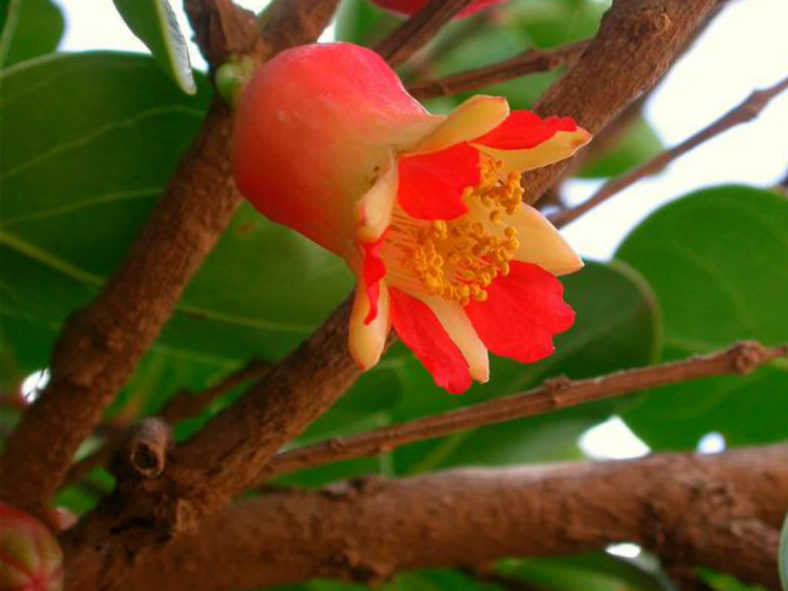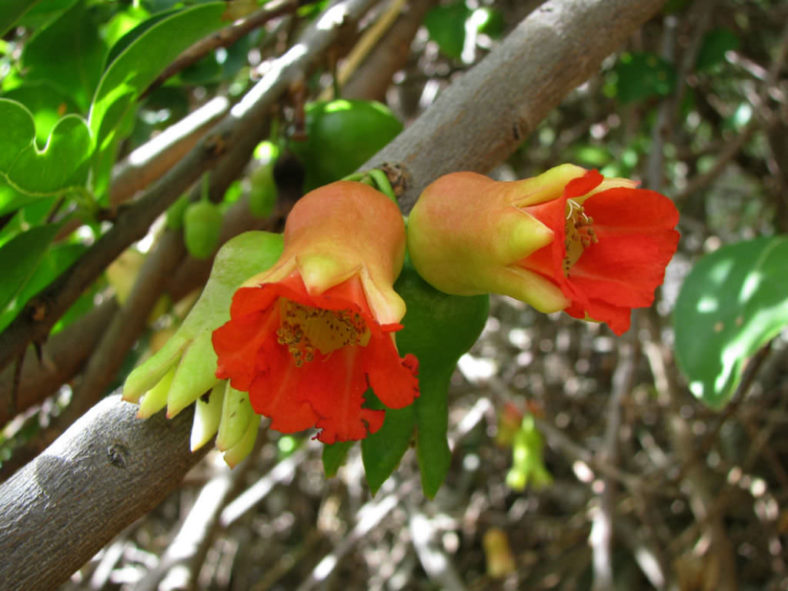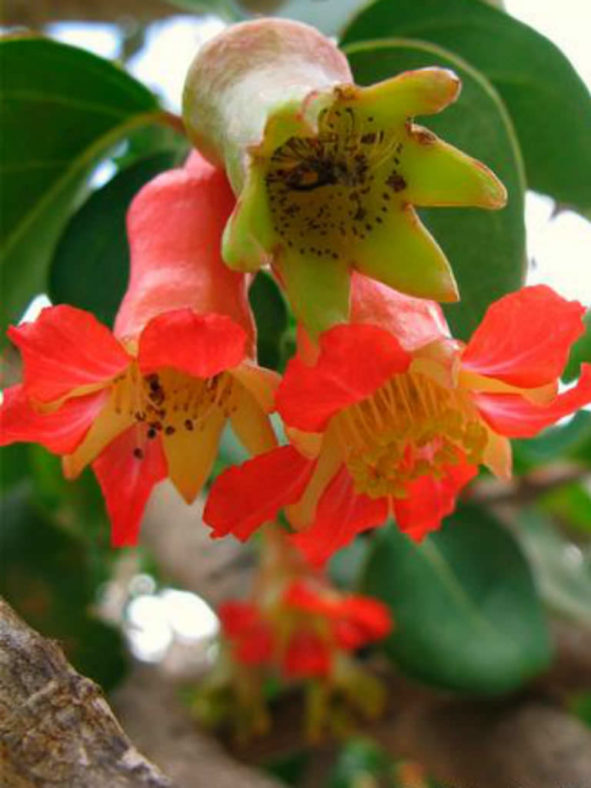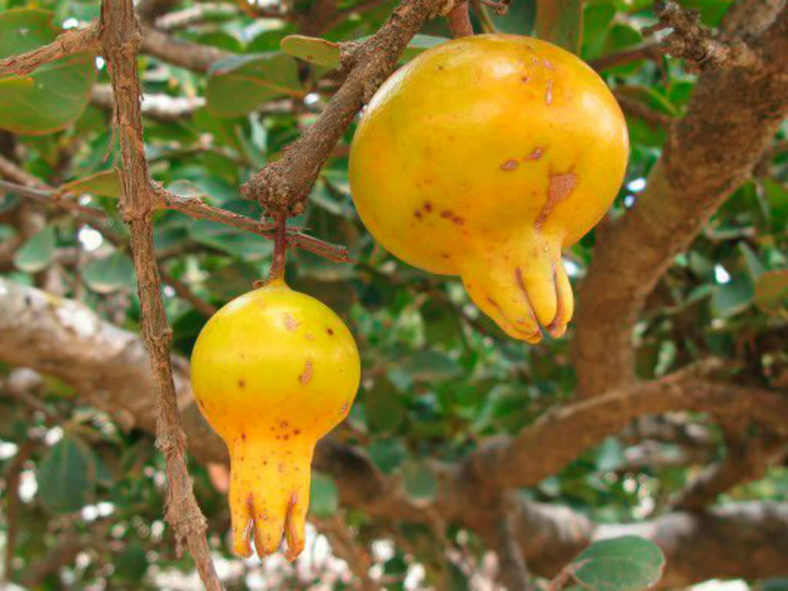Scientific Name
Punica protopunica Balf. f.
Common Name(s)
Socotran Pomegranate, Pomegranate Tree
Synonym(s)
Socotria protopunica
Scientific Classification
Family: Lythraceae
Genus: Punica
Origin
This species is endemic to the island of Socotra (Yemen).
Flower
Color: Pink
Bloom Time: December and January through to the summer
Description
Punica protopunica is a flowering shrub or small tree, often thorny and up to 15 feet (4.5 m) tall. When young, it has reddish-brown bark fading to grey as it ages and becomes less fruitful. Leaves are opposite, glossy dark green, and grow up to 1.2 inches (3 cm) long.
Flowers and fruits appear from December and January through to the summer. It differs from the Pomegranate (Punica granatum) in having pink (not red) trumpet-shaped flowers and smaller, less sweet fruit. Fruits are globose, up to 1.2 inches (3 cm) in diameter, and yellow-green or brownish-red when ripe.

Hardiness
USDA hardiness zone 7a to 11b: from 0 °F (−17.8 °C) to 50 °F (+10 °C).
How to Grow and Care
The Pomegranate shrub is somewhat drought tolerant and also salt tolerant. It is perfect for the sunniest and warmest locations in the yard that might scorch other plants. Pomegranate flowers can be used with other annuals, perennials, shrubs, and trees that attract hummingbirds. Pomegranate is a popular choice for bonsai. The bark is a red-brown color, and branches may have spines.
Pomegranate may be grown in part shade as necessary, but ideally should be placed somewhere with as much sun and warmth as possible. According to the California Rare Fruit Growers, the Pomegranate is drought tolerant, though irrigation is needed for proper fruit production. Water every 2 to 4 weeks during the dry season when you establish new shrubs. The optimal areas for this fruit are USDA Hardiness Zones 7-10. It is thought to come from Iran initially. The Pomegranate does best in well-drained soil, though it can thrive in many soils, from acid loam to alkaline soil.
See more at How to Grow and Care for Pomegranate.
Links
- Back to genus Punica
- Plantpedia: Browse flowering plants by Scientific Name, Common Name, Genus, Family, USDA Hardiness Zone, or Origin
Photo Gallery
Click on a photo to see a larger version.




